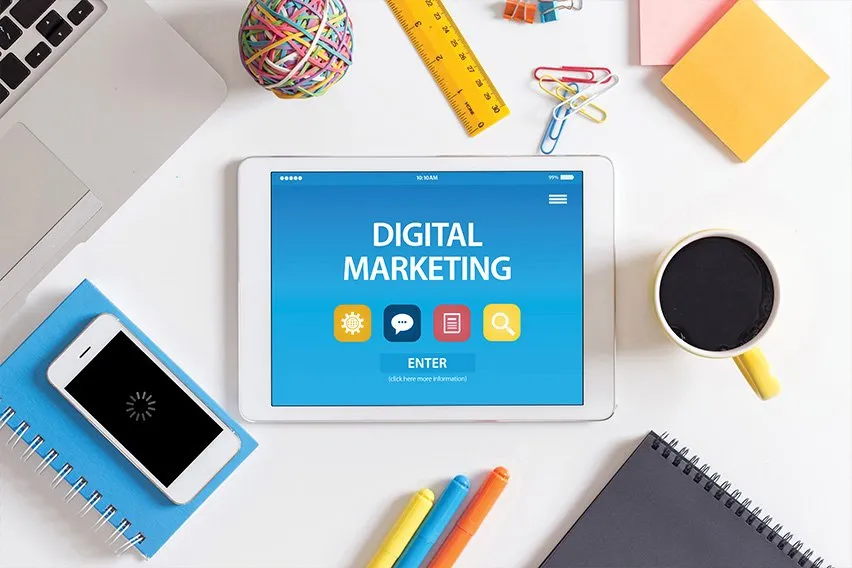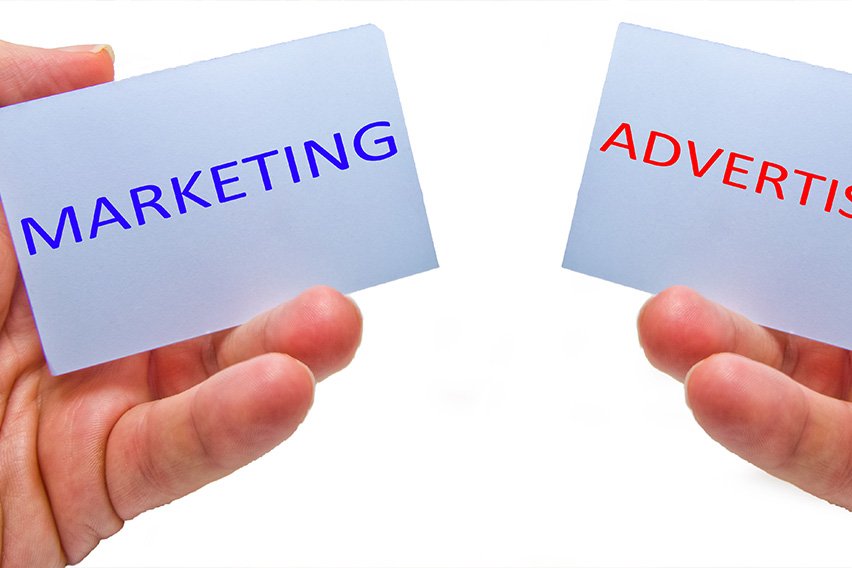Digital Marketing for Small Businesses: the Top 5 Channels & Methods Critical for Success

Digital marketing is a broad-based term that includes marketing through a company’s website, its email newsletter, and social media channels. Smart marketers also employ search engine optimization (SEO) techniques and pay for ad campaigns through search engine marketing (SEM) as part of their digital marketing strategy.
Here are the top 5 channels & methods critical for your digital marketing success:
- Digital Marketing Through Email Newsletters
- Using Your Small Business’s Social Media Channels
- Providing a Good User Experience on Your Company’s Website
- Digital Marketing Through Search Engine Optimization (SEO)
- Digital Marketing Through Search Engine Marketing (SEM)
1. Digital Marketing Through Email Newsletters
Email is still the #1 digital marketing channel. Why? Because your email is directly targeting people who already want this information. These potential customers previously let you know this by opting in for the email newsletter on your website, by providing their email addresses.
Business owners needs to be very careful with their emails because a customer can easily decide to stop subscribing to them. Here are some best practices for email newsletters:

Don’t Email Customers Too Often
One surefire way to drive away potential customers is to email your subscribers all the time. Be selective – decide in advance which messages are important, and stagger when they are sent. By not emailing too often, you are making the recipients feel special when they do receive an email from your business. Create a content calendar so you can keep track of it all.
Email Customers at the Right Time
The day of the week and the time of day you send an email will make a difference on when your recipients will open it. Track your emails, send them on different days and times. Check the open and click-through rates (more on that below) to see when you are getting the most traction.
Optimize Your Emails for Mobile
Today, people read their emails more on their mobile devices than on their desktops or laptops. Make sure your emails are optimized for mobile so that images can be seen, and text easily read.
Be Clear with the Call to Action
What exactly do you want the recipients of your emails to do? Most likely, you want them to click through to your site for a sale. Make it easy for them. Make sure that the call to action (CTA) button has a clear description, like “Click here to learn more”, or “Click here to purchase”. You should also have a CTA button at the top of your email, and again at the bottom. And hyperlinks in the body of your text.
Personalize Your Company’s Emails
You already have a database of names and email addresses, so set up your emails so that they are personalized. If Dave receives an email that says “Dear Dave”, he may be more likely to read it. As well, if Dave has expressed interest in a certain product or service, you can create a “group” and target an email to him and other people in the database with similar interests. For instance, “Hey Dave, it looked like you were interested in our new R5000 sunglasses. Here are some other similar products you may like…”.
Provide Engaging Content
Ever received a marketing email and there was too much information in it? Or the subject heading line was not clear? The pictures were not relevant, or perhaps there were spelling mistakes throughout the content?
You have very little time to catch and hold a consumer’s attention, and it starts with the subject header. That header has to be engaging enough to make the recipient want to open the email. Then the content inside the email needs to fulfill the header’s promise, as well as be professionally laid out, with links that the recipient will want to click on.
Analyze Open and Click-Through Rates
If you’re allocating resources on a marketing email, make sure you follow up on its effectiveness by running a report on the Open Rate and the Click-Through Rate (also known as “CTR”). You and your management team should be very interested in these numbers.
The open rate is the percentage of people who opened your email, based on the number of people it was sent to (you need to remove from the calculation any emails that bounced back). The Click-Through Rate is the percentage of recipients who opened your email and then clicked on the call to action to go to the website. From this information, you can also figure out the percentage or amount of people who went on to purchase something.
After some time, you will start to realize when is the best time to email your clients. This is because you will see some emails have higher open or click through rates depending on the day and time of the week your emails were sent. You should note that information for future email campaigns.
Remember that these analytics are important. They will help you determine success metrics, and what resources should be allocated for future campaigns.
2. Using Your Small Business’s Social Media Channels
Social media channels are a very effective tool because of hyper-targeting.
Think about what people typically do when they create a social media account. They provide a picture, enter their name and the city they live in, but sometimes they include a lot of other personal information too – like their sex, date of birth, occupation, interests, etc. Some social channels also know where you are, at any given time, so they can send you geo-targeted ads, or (in the case of Facebook) allow you to “check in” with your friends on places you’re visiting.
Most social media channels generate their revenue from advertising. Online marketers want to get their specific products or services in front of a selective market. This could be people of a certain sex, age, or occupation or it could even be based on their interests. The fact that social channels already have all this information makes them very attractive to advertisers. As an advertiser, you can then monitor who actually clicked through from the ad to your site, and then made a purchase.
Popular social media channels include:
Facebook started as an exclusive site for Harvard students in 2004, by Mark Zuckerberg and his friends. It began selling stock to the public in 2012, and gets most of its revenue from advertisements that appear on Facebook pages. As of January 2018, it had over 20,000 employees, 2.2 billion users, and ranked 76th on the Fortune 500 list.
Facebook targets people based on gender, age, location, demographic, interests and behavior when they’re on the site. A business can also save an audience “group” and target it again later for another ad.
Facebook is good for advertisers who want:
- A simple set up process
- Precise targeting
- To reach a larger audience, almost anywhere in the world
- To grow followers
Twitter launched in 2006 as a way to provide news bits, known as “tweets” (in this way it was known more as an information network, than a social one). Its global base, as of 2017, was 328 million.
Twitter advertising has been reported to be more expensive than Facebook, even though Facebook has more targeting features.
Twitter is good for advertisers who want:
- To target by keywords (Facebook targets by topic)
- To target by hashtags
- Ads in the news feed, as opposed to off to the side (in the feed makes them more dominant on mobile devices)
LinkedIn is a business networking site, that features business-related content and employment opportunities. It was founded in 2003. As of fall 2018, it has more than 250 million active users (in over 200 countries).
LinkedIn is good for advertisers who want:
- To advertise B2B (Business to Business)
- To advertise through LinkedIn’s InMail (Inmail is advertising messages that go directly to a user’s inbox on LinkedIn. This service is not offered on Facebook or Twitter).
This video and photo sharing site launched in October of 2010. Facebook acquired it in 2012. It was reported in 2017 that Instagram has 800 million users.
Advertisers should use Instagram if they want to:
- Target millennials (90% of their users are under the age of 35).
- Advertise on Facebook too (because Facebook owns Instagram, all the ads can be managed through one program, Facebook Ad Manager).
Snapchat
Snapchat is unique in that the pictures or messages in posts are only available for a short period of time. It launched in 2011. 3 billion snaps are created daily.
Advertisers should use Snapchat if they want to:
- Reach a very young audience (it is the most used platform for those aged 12 – 24)
- Create unique content (like “sponsored lenses”).
All of these social media channels will provide you with the proper analytics to see how successful your campaigns are.

3. Providing a Good User Experience on Your Company’s Website
Most of digital marketing is about driving traffic to your website so that a sale can be made. Perhaps a customer has been driven here through your social media campaign, or an email newsletter. You should also consider SEO & SEM techniques (more on those, in the next sections).
However they got here, the site needs to be clear, well designed, and even enjoyable to use. If a visitor to the site can’t find what he needs quickly, or it’s hard to navigate, then he’s not going to stay (or purchase anything).
Professional marketers should also consider a content marketing approach to their websites. Content marketing is valuable and relevant content to attract customers, as opposed to straight-up ads. Picture a blog with content related to everything home renovation, produced by a home renovation company. People reading that content will more likely buy from that company, because the company has been helpful to them, and has earned their trust.
For more on content marketing, check out the Content Marketing Institute.
4. Digital Marketing Through Search Engine Optimization (SEO)
Search engine optimization refers to the techniques one uses on a webpage to increase the odds it will appear in an online user’s SERP (Search Engine Results Page).
This optimization is done through the strategic placement of keywords and keyword strings, on a website. These are words related to your business, that potential customers are already looking for.
SEO techniques are also referred to as “Organic SEO” because they don’t cost anything.
SEO best practices include putting keywords in the URL name, in title tags (the name of your pages), in headers (that are prioritized), in the actual written content, and in the picture captions. This, along with other techniques – such as publishing regularly and providing external links, are all designed to increase your website’s credibility, and then its ranking, in search.
The more relevant your content, the more people will visit, and the higher your ranking will become (and the higher your website will appear on the SERP).
5. Digital Marketing Through Search Engine Marketing (SEM)
Search engine marketing is often referred to as paid search.
Search engine marketing does not rely on SEO at all—you are paying to appear towards the top of SERP (Search Engine Results Page) when matched to keyword strings that an online user has entered into google or other search engines. This link to your website will be identified as an ad.
SEM is a very powerful marketing tool, much more so than SEO. This is because of the number of websites that exist today, and how hard it is for them to appear organically through SEO because of the extreme amount of competition vying for the same keywords.
Did you find this article helpful? If so, check out our article on How to advertise a small business. In it, we explain various digital marketing methods to promote your business, including free ways to adverise it.
RELATED ARTICLES

 What Is LIFO Method? Definition and Example
What Is LIFO Method? Definition and Example Is Accumulated Depreciation an Asset? How To Calculate It
Is Accumulated Depreciation an Asset? How To Calculate It What Are Adjusting Journal Entries?
What Are Adjusting Journal Entries? Accrual Accounting: Definition, How It Works, and Examples
Accrual Accounting: Definition, How It Works, and Examples 7 Types of Advertising to Promote Your Small Business Effectively
7 Types of Advertising to Promote Your Small Business Effectively The Difference Between Marketing and Advertising: Why Your Small Business Needs Both
The Difference Between Marketing and Advertising: Why Your Small Business Needs Both